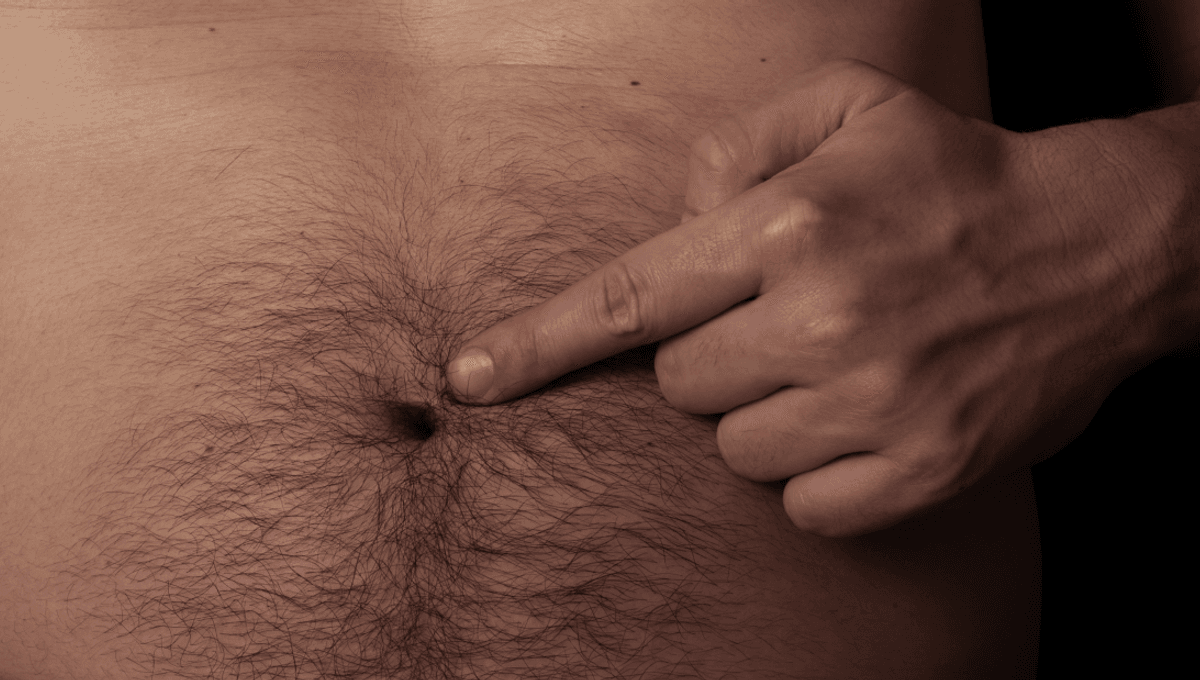
Belly button stones can be found hiding in the navels of humans, sometimes popping out as an extra surprise during pregnancy. These rare lesions are normally asymptomatic, but sometimes they can encourage an infection which can be serious if left untreated.
A case study of a 96-year-old woman describes how a suspected urinary tract infection turned out to be a complication of a belly button stone. After discovering a lump under her naval, they revealed a hardened naval stone that showed up as a calcified mass on CT. With the help of a little olive oil, the belly button stone popped right out.
Belly button stones are also known as navel stones, or if you want to be even fancier (while discussing umbilical hygiene) “omphaloliths”, from the Latin for navel (omphalos) and stone (litho). Whatever you call them, there’s no escaping the fact that everyone finds them a bit grim.
In a paper titled Omphalolith: The Ugly Navel Stone, authors Gerd Plewig and Albert Kligman describe the appearance of belly button stones, and the special navels that encourage their formation.
“Persons with an exceptionally deep, invaginated navel are prone to retain corneocytes within the cavity,” they explain. “Over years these become compressed into a compact hard bolus, a kind of pseudocomedo. The opening is wide. The color is brown or black, corresponding to the skin type of the patient. The pigment is melanin, not dirt or lipid. The same accounts for the color of open comedones. The bolus is firmly rooted and surprisingly difficult to remove.”
Yes, it seems developing a belly button stone deep down in your navel shares similarities with getting a huge spot, despite omphaloliths having nothing to do with acne. To use the paper’s terminology, they might look ugly, but they’re fortunately pretty benign provided they don’t contribute towards an infection in the belly button.
That said, few of us need that kind of surprise, so if you’d like to avoid developing a belly button stone there are some steps you can take to reduce your chances. While people with particularly deep or “invaginated” belly buttons are more prone to developing navel stones, it also comes down to hygiene.
“Omphalolith also known as umbilical calculus usually develops when patients fail to clean a deep umbilical cleft causing keratin and sebum to accumulate into a stone-like concretion,” writes the author of a case study of a 24-year-old who feared they might have cancer, but fortunately were just harboring a sizable belly button stone. “Awareness about this uncommon entity and its timely recognition can save the patient from undue stress, imaging studies, and procedures.”
It’s worth noting that extreme interventions aren’t needed to avoid belly button stones – simply making the effort to scrub it along with everything else while you shower or bathe should keep the dead stuff sloughing off at a healthy rate. Then again, apparently, none of us know how to shower properly, or how to wash our feet.
The content of this article is not intended to be a substitute for professional medical advice, diagnosis, or treatment. Always seek the advice of qualified health providers with questions you may have regarding medical conditions.
Source Link: Belly Button Stones Can Be Found Exactly Where You'd Expect